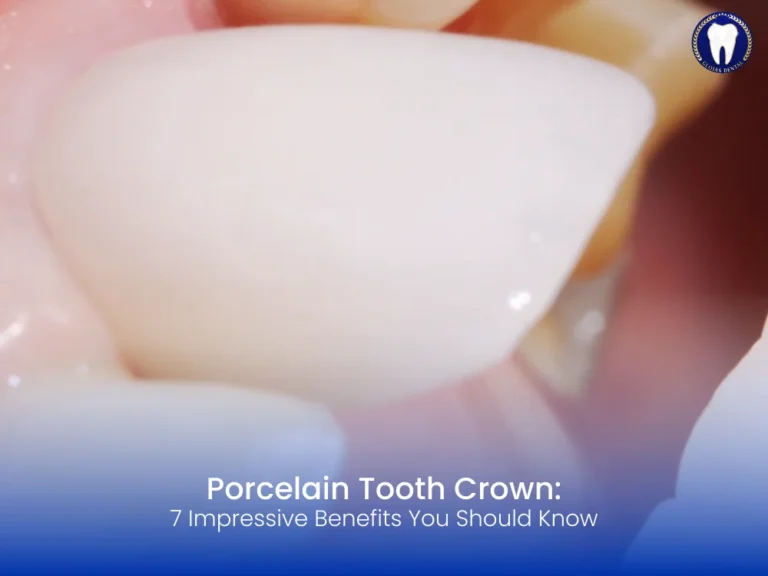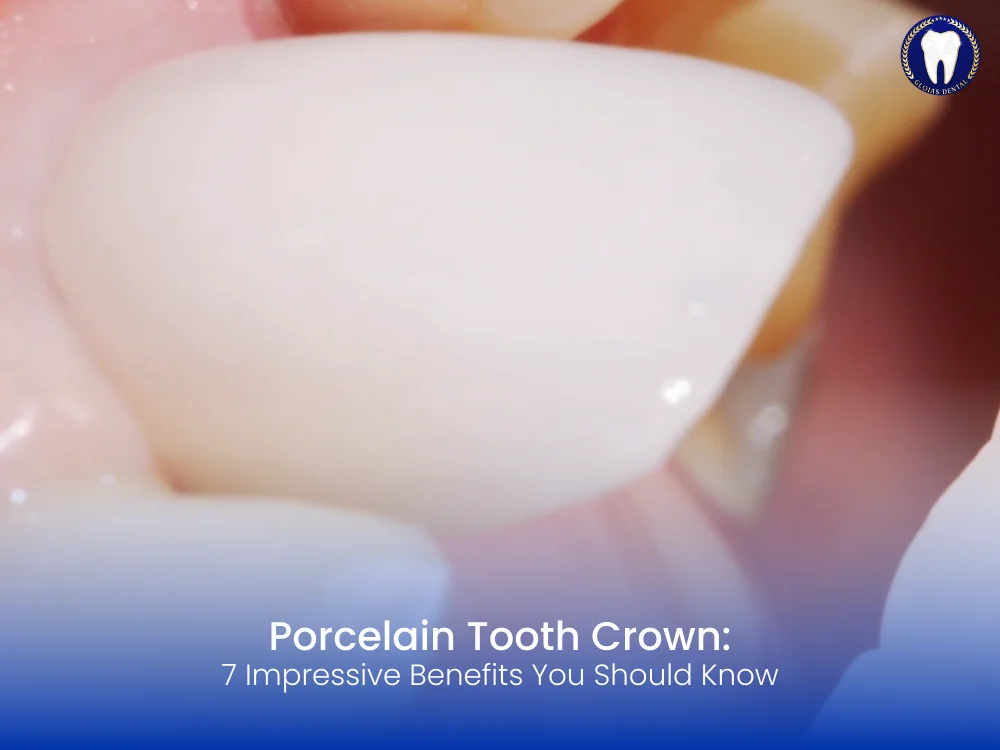A porcelain tooth crown is a custom-made cap placed over a damaged or decayed tooth. Made primarily of dental porcelain, these crowns mimic the natural look and feel of a real tooth while offering robust protection and cosmetic appeal. They are often used to restore broken teeth, cover large fillings, or protect a tooth after root canal treatment.
Porcelain crowns are lauded for their durability, biocompatibility, and lifelike aesthetics, making them one of the most requested dental restorations today.
Why Choose a Porcelain Tooth Crown Over Other Materials?
Porcelain crowns offer several advantages over other crown materials like gold, metal alloys, or resin. Here’s why:
- Natural Appearance: Porcelain mimics the translucency of real enamel.
- Stain Resistance: They’re less likely to discolor over time.
- Hypoallergenic: Ideal for patients allergic to metals.
- Customization: Color-matched to surrounding teeth.
The Process of Getting a Porcelain Tooth Crown
Step 1: Initial Consultation and Examination
Your dentist will evaluate the affected tooth through X-rays or digital scans to assess the extent of the damage and suitability for a porcelain tooth crown.
Step 2: Tooth Preparation
The tooth is filed down to accommodate the crown. This step ensures a snug fit and maintains proper bite alignment.
Step 3: Impression and Temporary Crown
An impression of the prepared tooth is taken to fabricate a custom porcelain crown. A temporary crown is placed for protection during this phase.
Step 4: Crown Placement
Once the final porcelain crown is ready, your dentist will cement it permanently, making adjustments for comfort and bite precision.
Durability and Lifespan of Porcelain Crowns
Porcelain crowns are known for their strength, especially when bonded correctly. With proper oral hygiene and care, a porcelain tooth crown can last 10–15 years or longer. Avoiding habits like teeth grinding and chewing hard objects extends their longevity.
How to Care for Your Porcelain Tooth Crown
Maintaining a porcelain crown is similar to caring for your natural teeth:
- Brush twice daily using non-abrasive toothpaste.
- Floss gently around the crown to avoid dislodging.
- Visit your dentist regularly for professional cleaning.
- Avoid biting on ice, pens, or other hard items.
Porcelain Tooth Crown for Front Teeth: Aesthetic and Strength Combined
When it comes to restoring front teeth, aesthetics matter just as much as strength. A porcelain tooth crown is ideal because it offers both.
Porcelain can be tinted to match your other teeth, and when placed properly, the transition is virtually invisible. It restores not just function, but confidence in your smile.
Cost of a Porcelain Tooth Crown: Is It Worth It?
The average cost of a porcelain crown ranges between $800–$2,500 depending on factors like:
- Location and dental clinic pricing
- Complexity of the restoration
- Insurance coverage
Though costlier than metal options, the aesthetic and functional value of a porcelain tooth crown makes it a smart long-term investment.
Risks and Considerations with Porcelain Crowns
Though generally safe, porcelain crowns come with minor risks:
- Chipping: Especially under extreme force.
- Sensitivity: Some patients experience temporary sensitivity post-placement.
- Fit Issues: Rare cases may require re-adjustment.
Choosing an experienced dentist minimizes these risks significantly.
Porcelain Tooth Crown vs. Veneers: What’s the Difference?
Feature | Porcelain Tooth Crown | Veneers |
Coverage | Entire tooth | Front surface only |
Strength | High | Moderate |
Use Case | Damaged or decayed teeth | Cosmetic improvements |
Invasiveness | More tooth structure removed | Less invasive |
Who Needs a Porcelain Tooth Crown?
You’re a good candidate if you:
- Have a broken or worn-down tooth
- Require protection after a root canal
- Have a severely discolored or misshapen tooth
- Need to anchor a dental bridge
Is the Procedure Painful?
Most patients report minimal discomfort during procedure. Local anesthesia is used during preparation, and some sensitivity may occur once the anesthesia wears off, but it typically resolves within days.
Modern Technology Enhancing Porcelain Tooth Crowns
Digital imaging and CAD/CAM (computer-aided design and manufacturing) now allow for same-day porcelain crown fabrication. This eliminates the wait time and offers precise customization for better fit and comfort.
Benefits of Choosing a Porcelain Tooth Crown
- Enhanced cosmetic appeal
- Improved speech and chewing ability
- Long-lasting durability
- Boosted self-confidence
- Biocompatibility with natural gums
FAQs About Porcelain Tooth Crowns
1. Can a porcelain tooth crown stain over time?
Porcelain is highly stain-resistant. However, it’s wise to avoid excessive consumption of staining foods and beverages like coffee and red wine.
2. How long does the entire procedure take?
Typically 2 appointments spaced a couple of weeks apart, unless using same-day CAD/CAM technology.
3. Is a porcelain tooth crown covered by dental insurance?
Many insurance plans cover a portion, especially if it’s deemed medically necessary rather than cosmetic.
4. Can a porcelain crown be whitened?
No. Porcelain doesn’t respond to whitening agents. Whitening your natural teeth first before matching the crown is recommended.
5. What happens if my porcelain crown chips?
Small chips can sometimes be repaired. Otherwise, the crown may need to be replaced entirely.
6. Is it normal to feel discomfort after getting a crown?
Yes, mild sensitivity or discomfort is normal and should subside in a few days. Persistent pain warrants a follow-up with your dentist.

